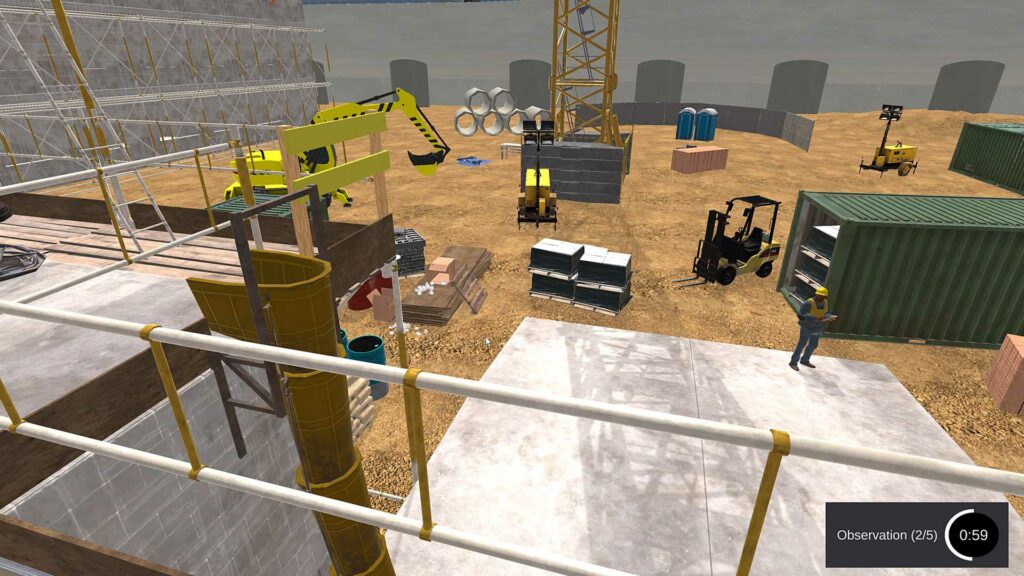In the last few years, I seem to have had a constant battle with ice and snow relating to slips and falls. I was working on one of our courses relating to fatal-four injuries and accidents and it reminded me of the importance of safety in the workplace relating to falls. I thought that I would start an article relating to falls to further the discussion regarding safety and the workplace.
Falls are a leading cause of workplace accidents, injuries, and fatalities. According to data from the Occupational Safety and Health Administration (OSHA), falls are consistently one of the top causes of workplace injuries and fatalities in many industries. OSHA reports that falls from heights are the leading cause of death in the Construction Industry, and falls to a lower level are the second leading cause of death in General Industry. Employers and employees need to take appropriate measures to prevent falls in the workplace, including proper training, the use of appropriate personal protective equipment, and regular inspections and maintenance of work environments.
Let’s look at some more detailed discussions on how we can prevent falls in the workplace and create a safer and more productive environment for employees. Here are some steps that employers and employees can take to prevent falls in the workplace:
- Identify potential hazards: Employers should identify potential fall hazards in the workplace and take steps to eliminate them. This may involve installing guardrails, using safety nets, providing personal fall arrest systems, and using other engineering controls.
- Provide training: Employers should provide training to employees on how to recognize and avoid fall hazards, as well as how to use fall protection equipment properly.
- Use appropriate personal protective equipment: Employees should wear appropriate personal protective equipment, such as safety harnesses, hard hats, and slip-resistant shoes.
- Maintain a clean and organized work environment: Employers should maintain a clean and organized work environment, free of clutter and debris, to reduce the risk of slips, trips, and falls.
- Conduct regular inspections: Employers should conduct regular inspections of the workplace to identify and address potential hazards before they result in an accident.
- Encourage reporting: Employers should encourage employees to report any potential hazards or unsafe conditions so that they can be addressed promptly.
Speaking of one of our courses regarding walking and working surfaces and fatal-four injuries, let’s look at how immersive training might offer a solution to creating a safer workplace.
Immersive training can help reduce slips, trips, and falls (STFs) in the workplace. By using virtual reality (VR) technology, employers can create realistic and interactive simulations that enable employees to practice identifying and addressing potential STF hazards in a safe and controlled environment.
Studies have shown that immersive training with VR simulations can improve safety knowledge, hazard recognition, and behavior change related to STF hazards. This type of training can be particularly effective for high-risk industries such as construction, manufacturing, and warehousing.
One of the benefits of VR training is that it allows employees to practice identifying and addressing potential hazards without putting themselves in danger. This can help to reduce the risk of accidents and injuries in the workplace. Additionally, VR training can be more engaging and memorable than traditional training methods, which can improve knowledge retention and behavior change.
One of the best examples of how a VR simulation can help reinforce the need to follow proper safety processes and procedures is the use of a consequence exercise. For example, the simulation would play out checking and inspecting the safety harness of a worker going up on an extensive scaffolding rig. If the employee forgets to inspect the lanyard the simulation can portray a fall where the lanyard holds for a brief moment but then snaps and the employee falls with the result of a serious injury or even a fatality. VR simulations are the only type of training material that can portray this type of consequence in such an impactful manner. The net result, the content is memorable and retained.
VR training provides a more immersive and interactive learning experience, which can make the training more engaging and memorable.
Studies have shown that VR training can improve knowledge retention, learning outcomes, and behavior change compared to traditional training methods. In one study, trainees who received VR training scored significantly higher on a hazard recognition test compared to those who received traditional training.
Additionally, VR training can provide real-time feedback and performance metrics, which can help employees to identify areas where they need to improve. This can help to reinforce learning and encourage ongoing improvement.
By providing a more interactive and realistic learning experience, employers can help employees to better retain and apply the knowledge and skills they need to work safely and effectively.
I hope this article provides the seeds for continuing discussion on a safety topic that is extremely important to both employers and employees alike in striving to create a safe and productive work environment and driving workplace accidents and injuries to zero.


